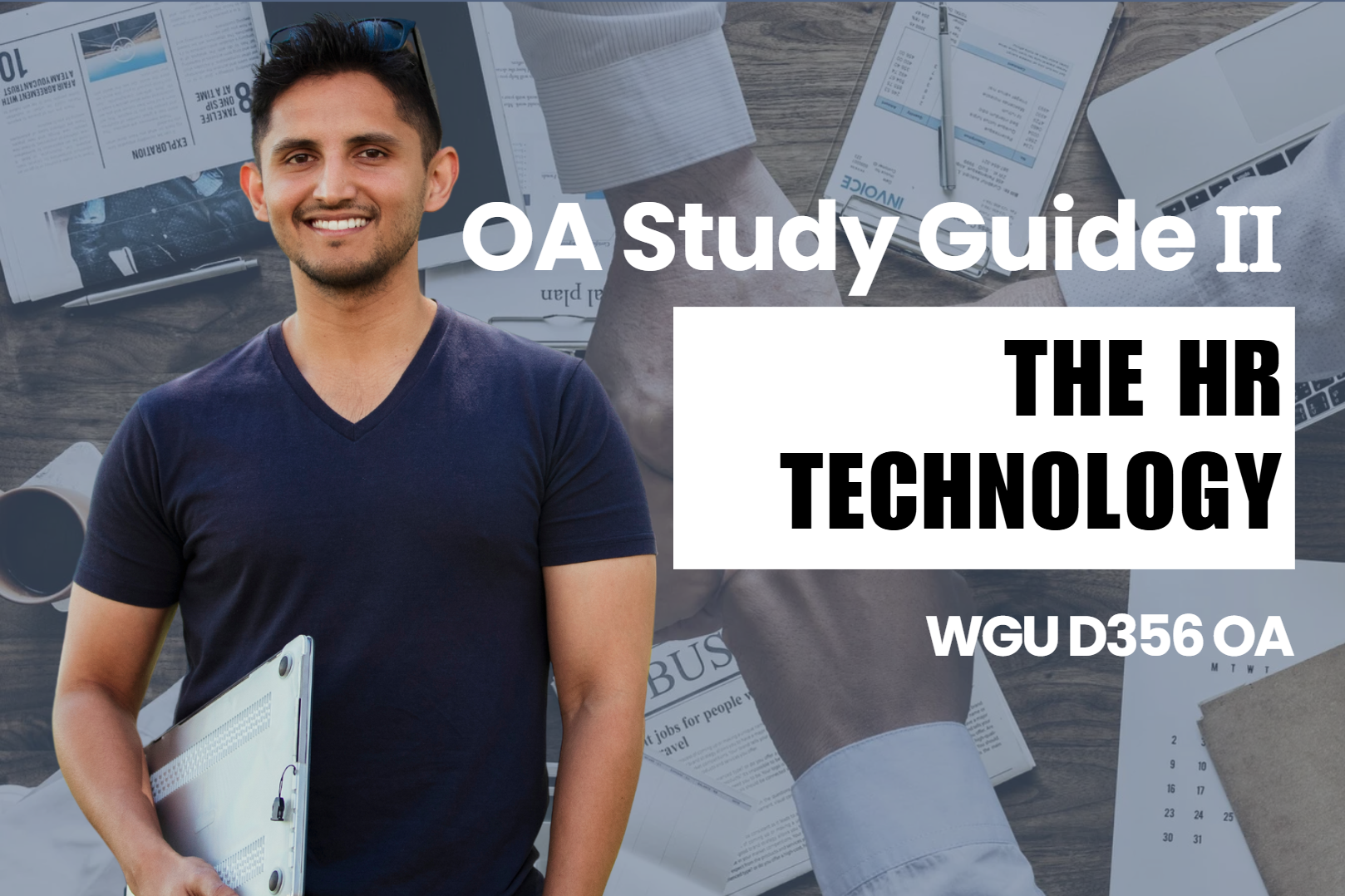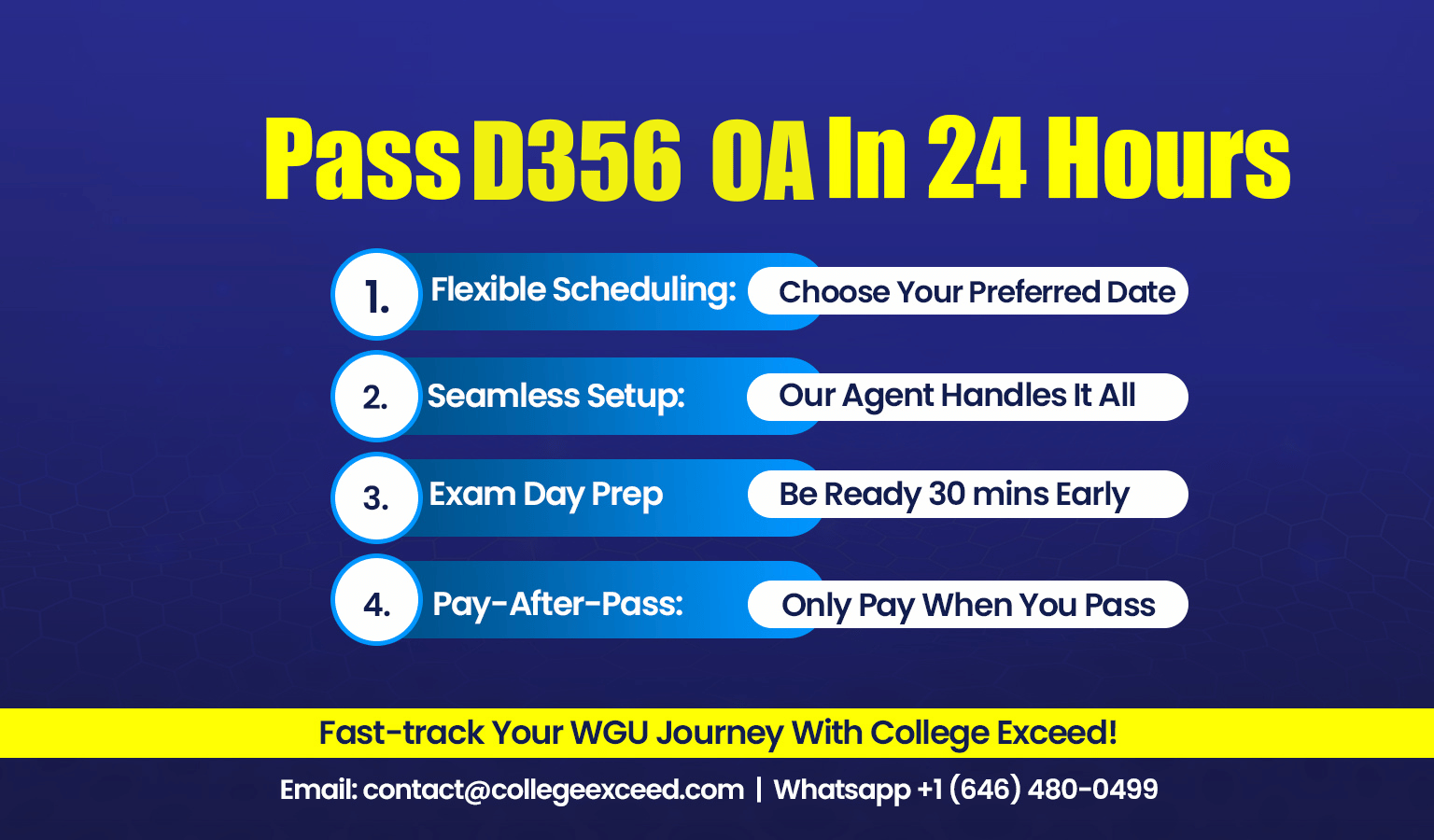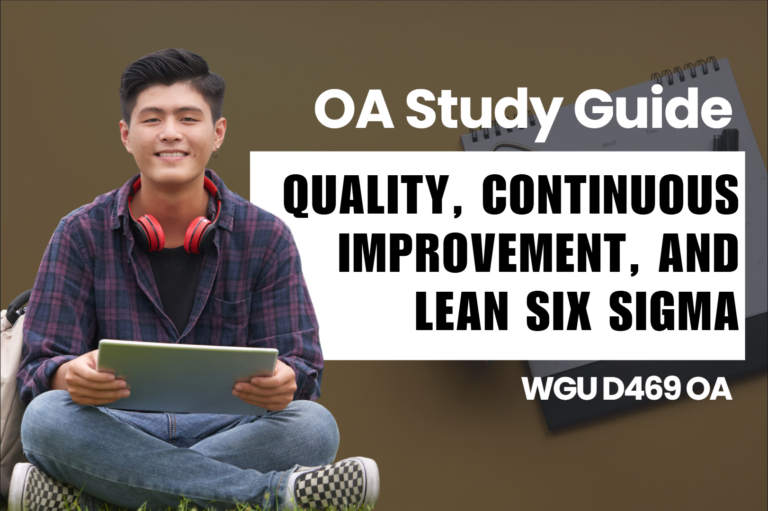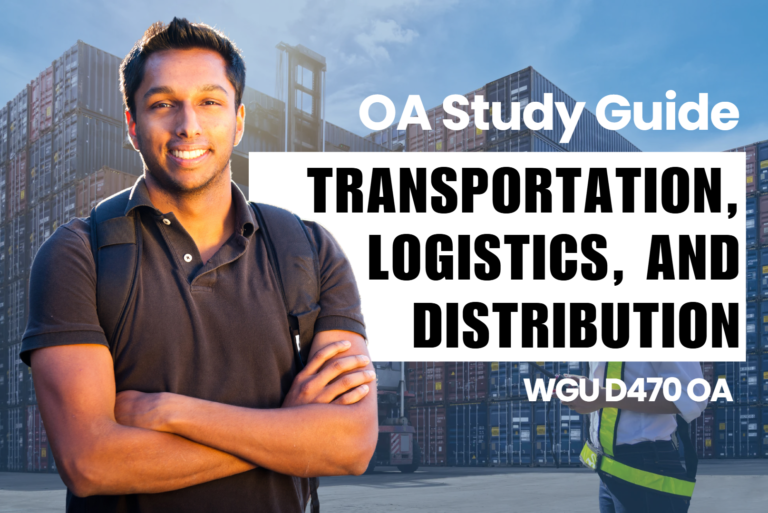WGU D356 OA Study Guide - 2025 | A Journey Through the Top Change Management Models📖
Every organization experiences change because it involves both adding new office devices and improving human resource systems as well as managing larger workforce changes. Change transitions don’t need to feel stressful. Change management frameworks exist to help us make successful transitions to new places.
In this article, we’ll dive into four transformative models that simplify the process and address both the practical and emotional aspects of change:
- ADKAR Model: Organizations use a step-by-step method to help people understand, want, learn, gain skills, and develop stronger habits.
- Kotter’s 8-Step Change Model: This approach shows organizations how to tackle major transformation programs step by step with considered detail.
- Lewin’s Change Management Model: The plan features three stages to move employees from established routines toward updated processes.
- Bridges’ Transition Model: A thoughtful framework centered on helping individuals emotionally adapt to change.
Whether you’re gearing up for the WGU D356 OA or leading HR technology upgrades, these models provide the tools to make change less daunting and more impactful. Let’s get started!
How to Use This Guide for the WGU D356 OA Exam?📝
The D356 HR Technology OA exam at WGU evaluates your understanding of change management theories, organizational transformation, and HR technology frameworks. This guide simplifies the key concepts of the ADKAR Model, Kotter’s 8-Step Change Model, Lewin’s Change Management Model, and Bridges’ Transition Model to help you grasp the topics tested in the exam.
We also provide exam-style questions and practical applications to ensure you’re fully prepared for the questions on the WGU D356 OA exam.
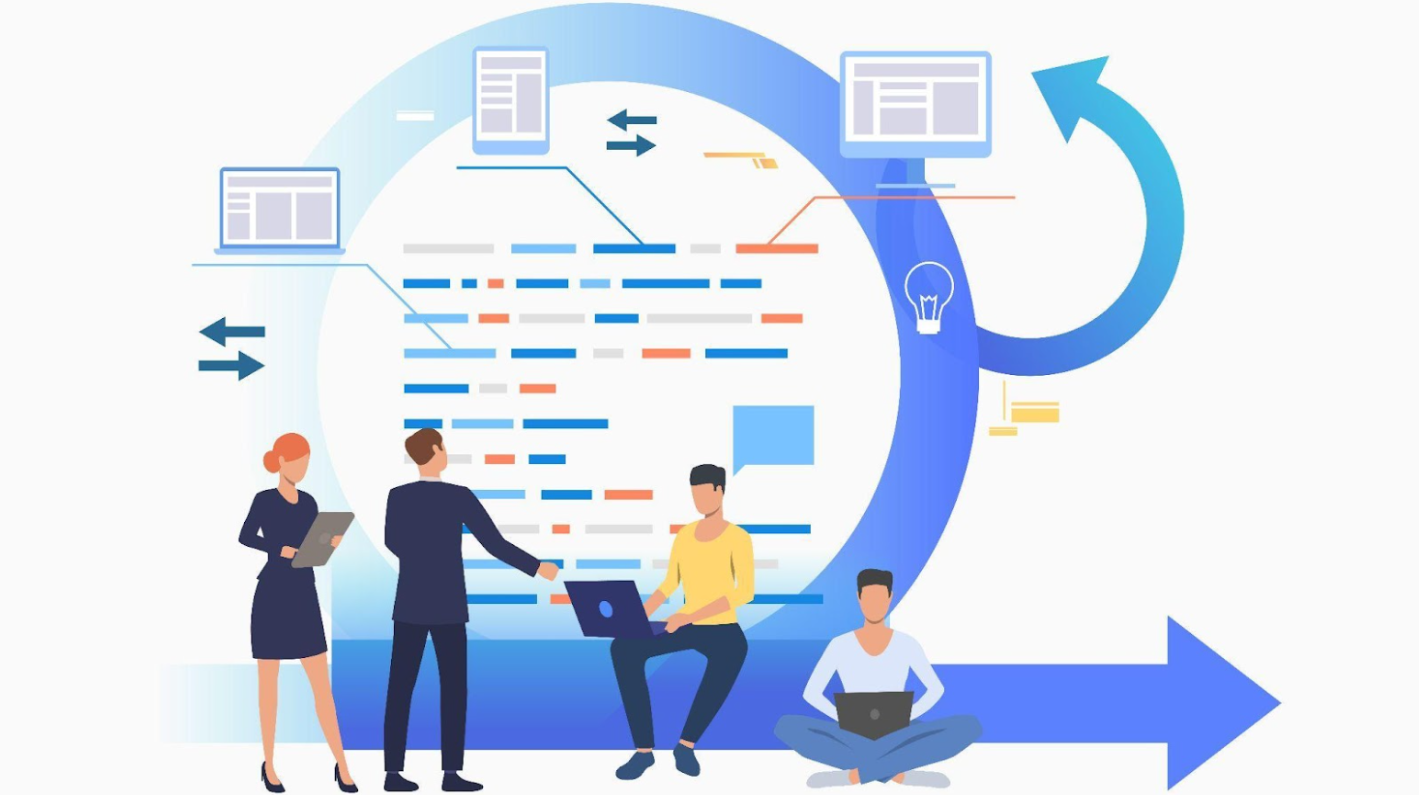
Change Management Model #1: The ADKAR Model For D356 OA 📝

Change can be challenging, especially in organizations where teams need to adapt quickly. The ADKAR Model, developed by Prosci in the 1990s, offers a step-by-step framework to help individuals and organizations navigate change effectively. This model emphasizes personal transformation as the cornerstone of successful change, making it particularly relevant for students studying HR Technology in WGU D356.
What Is the ADKAR Model?
The ADKAR Model is a change management framework designed to guide individuals through the process of change. Unlike some other models that focus primarily on organizational strategies, ADKAR prioritizes individual experiences. The name ADKAR represents five key steps in a successful change journey:
- Awareness – Understanding the need for change.
- Desire – Building the motivation to participate in the change.
- Knowledge – Gaining the information and skills required for the change.
- Ability – Putting new knowledge into practice.
- Reinforcement – Ensuring the change is sustained over time.
This sequence ensures that individuals not only understand the change but are also empowered to adopt and maintain it.
Breaking Down the ADKAR Steps
Each phase of the ADKAR Model addresses specific needs and challenges:
1. Awareness
People need to understand the requirements for transformation. Staff require a full understanding of what changes occur and the essential reasons behind them. When an organization decides to use new HR technology the leadership team explains this choice because it will save time with improved data entry and stay compliant with legal requirements.
Key Strategies:
- Share clear and consistent communication through emails, webinars, and meetings.
- Emphasize how the change aligns with organizational goals.
2. Desire
Desire is about cultivating a willingness among individuals to support and engage in the change process. This often involves addressing personal concerns and motivations.
Key Strategies:
- Highlight personal benefits, such as reduced workload or improved efficiency.
- Conduct Q&A sessions to address hesitations.
- Offer incentives to early adopters or champions of the change.
3. Knowledge
Knowledge involves providing the information and skills needed to implement the change. Employees must understand how to use new tools or processes effectively.
Key Strategies:
- Design comprehensive training programs, including hands-on workshops and user guides.
- Tailor learning methods to suit different preferences, ensuring accessibility for all.
4. Ability
This step ensures employees can translate their knowledge into action. It’s one thing to know how something works, but another to apply it confidently in a real-world setting.
Key Strategies:
- Provide ongoing support through coaching and mentorship.
- Set up test environments where employees can practice.
- Encourage collaborative problem-solving to build confidence.
5. Reinforcement
Reinforcement focuses on sustaining the change by embedding it into daily practices. This ensures the new behaviors become permanent.
Key Strategies:
- Use performance metrics to track progress.
- Recognize and reward individuals or teams who excel in adopting the change.
- Schedule follow-ups and refresher training to address any lingering challenges.
Why Is the ADKAR Model Important?
The ADKAR Model stands out because it focuses directly on helping individual employees. One person makes all the difference when change takes place. To deliver tailor-made resolutions leaders need to discover which problems prevent employees from accepting or understanding new practices.
For example, when implementing a new HR system, the ADKAR Model helps ensure employees:
- Understand why the system is necessary.
- Are motivated to use it.
- Receive proper training and support.
This structured approach minimizes resistance and maximizes engagement, leading to smoother transitions.
Change Management Models: Kotter's 8-Step Change Model For D356 OA 📝
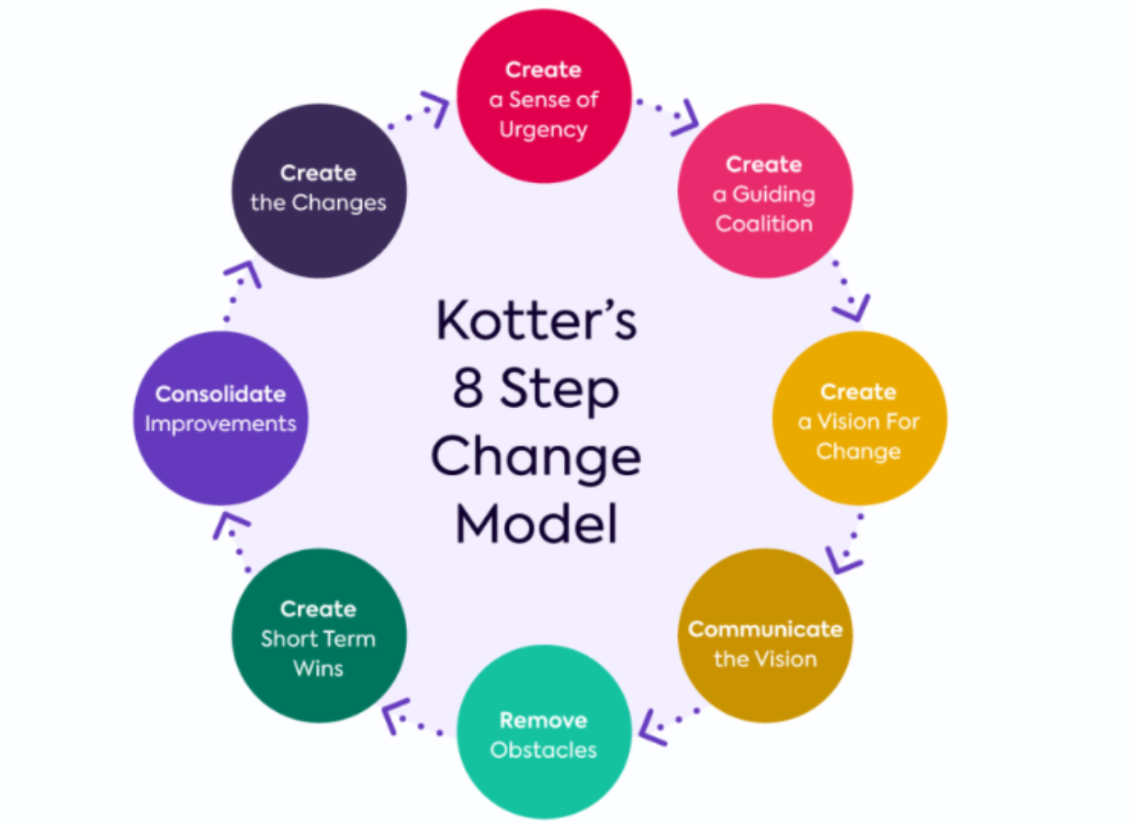
Changing how organizations work demands an organized system to produce effective results. During his time at Harvard Business School John Kotter created an 8-step model for organizational change management and implementation. The ADKAR Model teaches WGU D356 students effective change management skills and they use it to understand HR Technology better.
What Is Kotter’s 8-Step Change Model?
Kotter’s model breaks the change process into eight sequential steps that help organizations plan and execute changes smoothly. Each step is designed to address specific challenges and create a sustainable transformation.
The eight steps are:
- Create a Sense of Urgency
- Build a Guiding Coalition
- Develop a Vision and Strategy
- Communicate the Vision
- Remove Obstacles and Empower Action
- Create Short-Term Wins
- Consolidate Gains and Produce More Change
- Anchor New Approaches in the Culture
Let’s explore these steps in detail.
Breaking Down the 8 Steps
1. Create a Sense of Urgency
The first step focuses on helping people understand why the change is necessary. Without urgency, organizations risk complacency.
How to Achieve This:
- Study external developments to understand why change is critical now.
- Show stakeholders how the situation can turn worse if we delay our response.
- Show stakeholders how important action is right now for them.
The HR Technology case requires you to show how outdated systems lower productiveness before explaining new digital solutions could make work faster. Employees want to see how direct improvements from change will solve their daily work problems.
2. Build a Guiding Coalition
This step involves assembling a group of influential individuals who can champion the change initiative.
How to Build the Coalition:
- Include leaders from various levels and departments to ensure diverse perspectives.
- Ensure the group has the credibility and authority to drive the change.
- Promote collaboration within the team to create unified messaging and efforts.
A strong coalition will serve as the backbone of the change process, inspiring confidence among employees by leading by example and maintaining transparency.
3. Develop a Vision and Strategy
A clear vision is essential for aligning efforts and providing direction.
Steps to Develop a Vision:
- Define what success looks like for the change initiative.
- Align the vision with organizational goals.
- Make plans that lead us toward our vision yet stay within our reach and enable easy measurement.
HR Technology leaders need to develop a plan that enhances staff experience and organizational success through a new operating system.
4. Communicate the Vision
Communication is key to gaining buy-in from employees and stakeholders.
Effective Communication Strategies:
- Use multiple channels (emails, workshops, meetings) to share the vision.
- Ensure the message is consistent, concise, and addresses employee concerns.
- Repeat the message often to reinforce its importance, leveraging storytelling and visuals to make it engaging.
5. Remove Obstacles and Empower Action
Identifying and addressing barriers to change is crucial for progress.
How to Remove Obstacles:
- Identify resistance points and address them through open dialogue and active listening.
- Empower employees by providing resources, training, and authority to act.
- Offer incentives or tools that make it easier for employees to embrace the change, such as simplified workflows or immediate support systems.
6. Create Short-Term Wins
Celebrating early successes helps to build momentum and reinforce the benefits of change.
Steps to Create Wins:
- Set achievable goals that demonstrate progress, such as pilot projects or departmental rollouts.
- Recognize and celebrate individual and team accomplishments publicly to build morale.
- Use these wins to validate the change initiative and demonstrate its value to the organization.
7. Consolidate Gains and Produce More Change
Sustaining change requires leveraging early wins to tackle larger challenges.
How to Consolidate Gains:
- Build on successes by addressing additional barriers or implementing further improvements.
- Keep the momentum going by continuously assessing progress and adjusting strategies.
- Share updates regularly to maintain transparency and engagement among employees.
8. Anchor New Approaches in the Culture
For changes to last, they must become part of the organization’s culture.
Strategies to Anchor Change:
- Align new behaviors with organizational values by integrating them into job descriptions, performance metrics, and company policies.
- Recognize and reward individuals who embody the change, showcasing their contributions as examples.
- Continuously communicate how the change contributes to long-term success, ensuring its relevance remains clear.
Importance of Kotter’s Model in HR Technology
Kotter’s 8-Step Change Model sets a necessary organizing process to help human resource technology projects succeed. The model focuses on better teamwork to reduce worker opposition and fix performance problems. The process takes organizations through every step to both approve and maintain new technology systems for full success. HR experts benefit greatly from this framework when they face workplace transformation issues.
Tired of reading blog articles?
Let’s Watch Our Free WGU D356 Practice Questions Video Below!
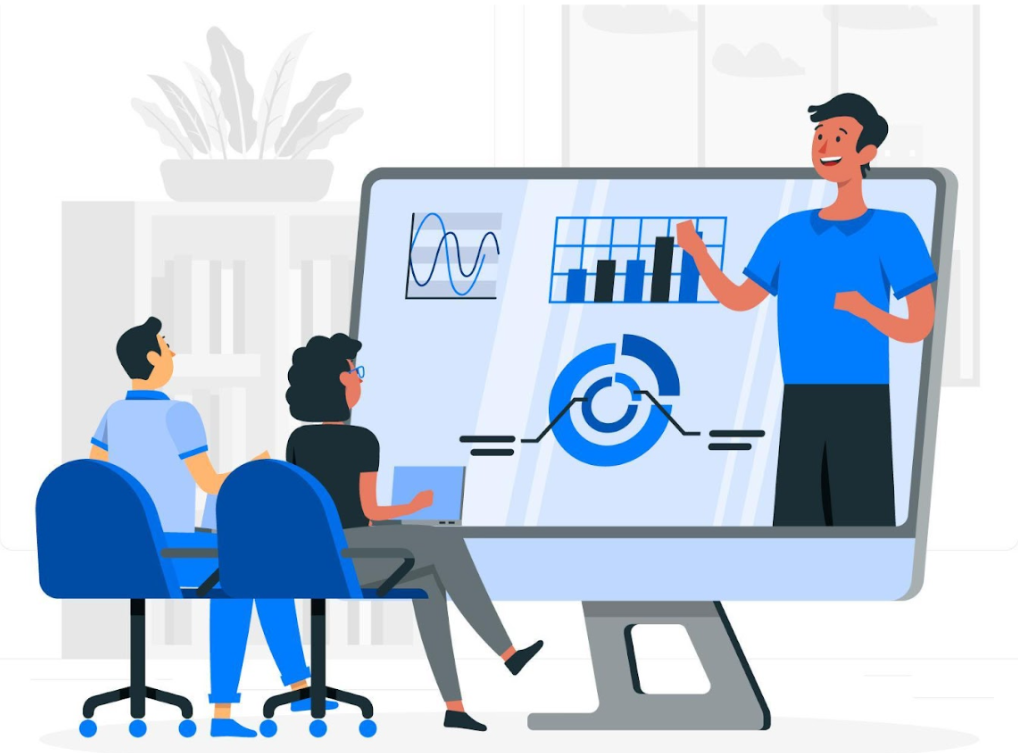
Change Management Models: Lewin’s Change Management Model For D356 OA 📝
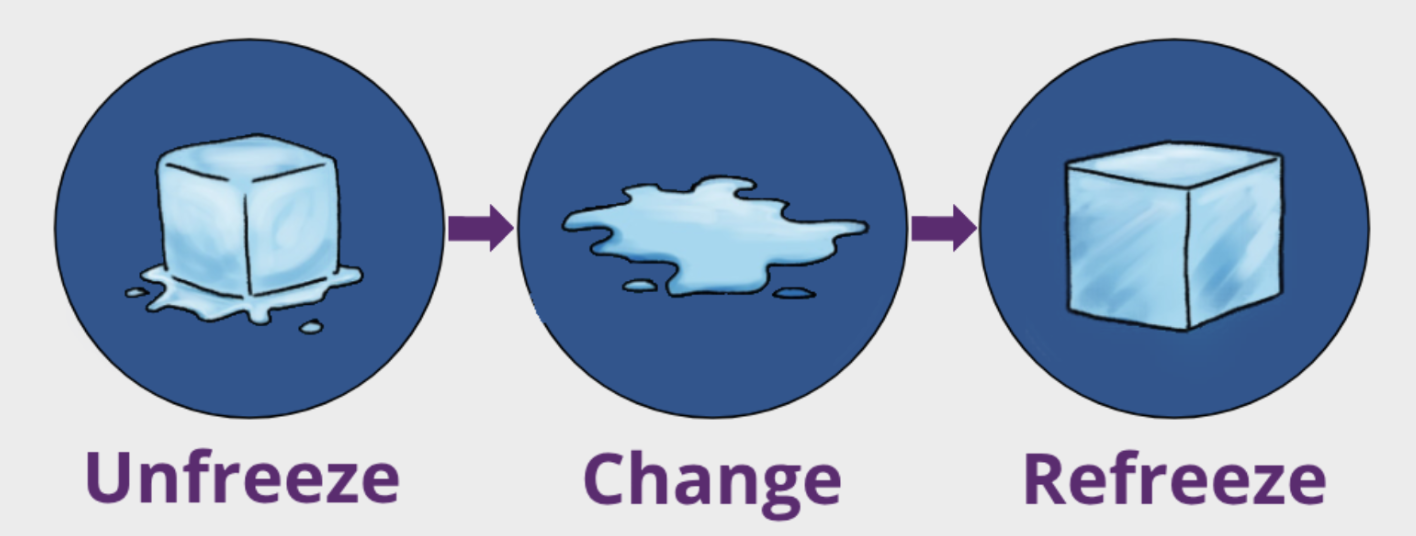
Navigating change in organizations requires not only skill but also a well-defined framework. Lewin’s Change Management Model, developed by social psychologist Kurt Lewin in the 1940s, provides a simple yet powerful approach to understanding and managing change effectively. For students in WGU D356, mastering this model is essential, particularly for implementing HR technology transformations.
Overview of Lewin’s Change Management Model
As a leader of social and organizational psychology Kurt Lewin developed this model to explain how changes happen in groups. The model explains that organizations move from their current state to their future state while dealing with forces that want the change to happen versus those that try to stop it.
Purpose of the Model
Lewin’s model focuses on helping organizations:
- Understand why change is necessary.
- Implement it effectively.
- Ensure it becomes a lasting part of the organization’s culture.
The model divides the process into three stages:
- Unfreeze
- Change (Transition)
- Refreeze
The Three Stages of Lewin’s Change Model
1. Unfreeze
The organization begins its transformation by ending old behaviors to create space for new approaches. Organizations must help staff recognize why changes are necessary and how to overcome their challenges.
Key Activities in Unfreezing:
- Communicate the Need for Change: Use data and examples to illustrate inefficiencies or challenges in the current system.
- Engage Stakeholders: Involve employees and leaders in discussions to understand their perspectives and build support.
- Address Concerns: Be transparent about the reasons for the change and how it will impact employees positively.
- Conduct Process Analysis: Identify existing workflows and pinpoint areas needing improvement.
In HR technology, this might include highlighting how outdated systems create inefficiencies and explaining how a new system will streamline processes.
2. Change (Transition)
These actions mark the start of employee change toward new work behaviors and systems. Workers must transfer from established patterns to the new direction of operation.
Key Activities in Transition:
- Training and Support: Run technical training programs and group demos plus make written user guides available to teach workers about new work tools and systems.
- Open Communication: Share information at every stage and create moments for employee feedback.
- Highlight Early Successes: Show employees how their work got better by using the new system as evidence to boost enthusiasm.
- Encourage Collaboration: Give your workers a place where they can help each other solve pressing issues.
When deploying new HR software employees will have access to learning materials while IT specialists remain available to assist them.
3. Refreeze
In this final stage, the organization stabilizes the change, integrating it into everyday operations to ensure it becomes permanent.
Key Activities in Refreezing:
- Reinforce New Behaviors: The organization must give rewards and recognition to help staff members use the new system.
- Monitor Progress: Keep watching if the changes work properly and make necessary updates.
- Provide Ongoing Support: Regular update sessions plus ways to share feedback allow staff to solve workplace issues and stay committed to changes.
- Embed Changes in Culture: Update policies, procedures, and performance metrics to reflect the new practices.
A practical example in HR technology would be tracking user engagement with the new system and celebrating teams that successfully integrate it into their workflows.
Driving and Restraining Forces
Lewin’s model highlights the importance of understanding the forces that influence change:
- Driving Forces: These promote change, such as the need for improved efficiency or staying competitive.
- Restraining Forces: These resist change, including fear, uncertainty, or lack of resources.
By analyzing these forces, organizations can strategize effectively to minimize resistance and enhance driving forces.
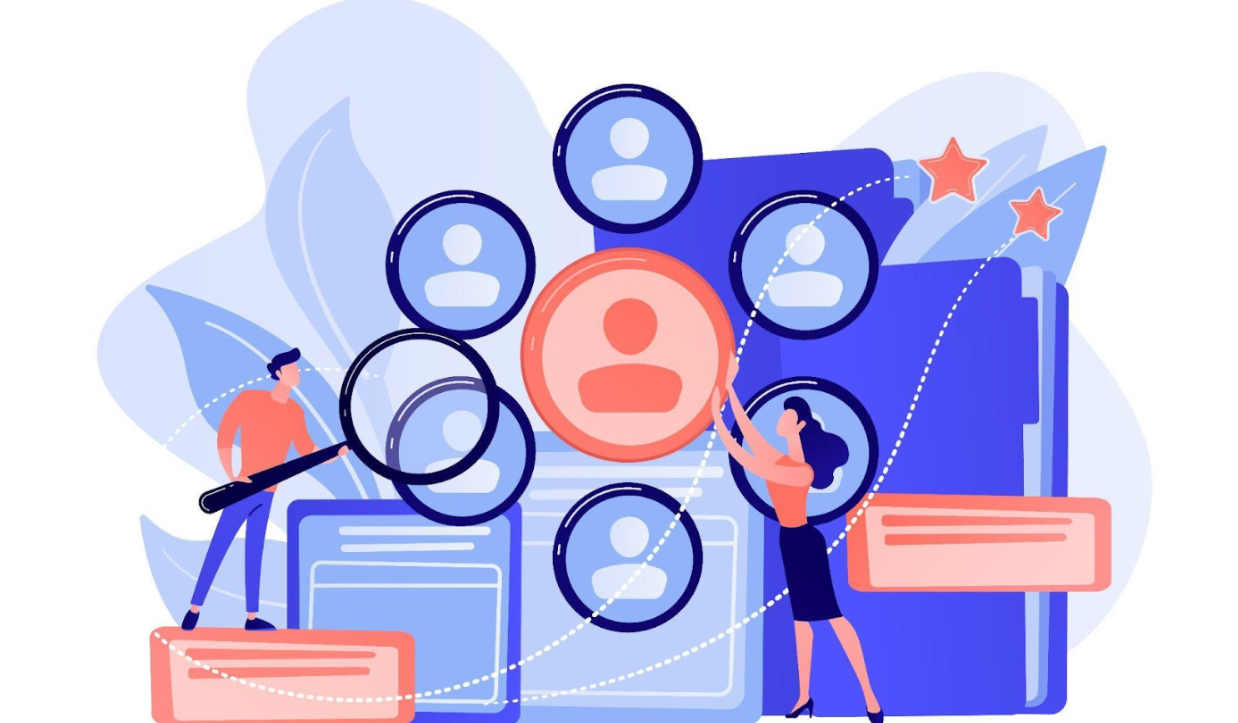
Change Management Models: Bridges’ Transition Model For D356 OA📝
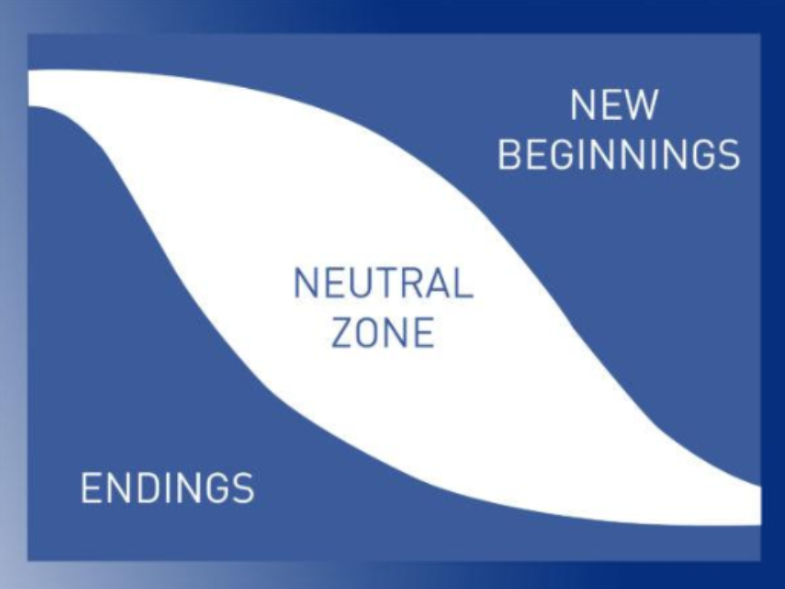
Understanding change isn’t just about implementing new systems or processes; it’s also about addressing the emotional and psychological transitions people experience during change. Bridges’ Transition Model, developed by William Bridges, emphasizes this human side of change. For students in WGU D356, mastering this model equips them with tools to support individuals and teams through challenging transitions, especially in HR technology.
Overview of Bridges’ Transition Model
Bridges’ Transition Model focuses on the internal process individuals go through during change, distinguishing it from the external changes occurring in an organization. This model divides transitions into three key phases:
- Ending, Losing, and Letting Go
- The Neutral Zone
- The New Beginning
Each phase highlights the emotional journey of individuals as they adapt to new realities.
The Three Phases of Bridges’ Transition Model
1. Ending, Losing, and Letting Go
This phase involves acknowledging the end of the current state and addressing the emotions tied to letting go of the old ways.
Key Activities in This Phase:
- Recognize Current Systems: Acknowledge the familiarity and comfort employees have with existing processes or tools.
- Communicate the Reasons for Change: Explain to everyone which business needs the change and discuss how it brings benefits to both the workplace and its staff members.
- Provide Emotional Support: Organize learning events or confidential sessions to help workers deal safely with their concerns about change.
- Transparency: Share all updates both through formal company meetings and email messages to keep everyone informed.
In HR technology, this phase might involve explaining why outdated systems are being replaced with newer, more efficient solutions and addressing employee concerns about the transition.
2. The Neutral Zone
The Neutral Zone is the transitional phase where employees adapt to the change. It’s often marked by uncertainty and confusion as individuals navigate the new systems or processes.
Key Activities in This Phase:
- Provide Comprehensive Training: Teach employees through class lessons and tool training programs that introduce them to new work software.
- Encourage Experimentation: Let your workforce discover new systems by trying things before performance impacts their job.
- Gather Feedback: Create ways to hear employee problems by asking them questions and meeting with them frequently to solve their issues quickly.
- Maintain Communication: Tell staff about changes in the system with active details of its progress towards completion.
During the implementation of new HR technology, the organization sets up virtual practice rooms for workers to hone their skills and decrease anxiety.
3. The New Beginning
In this final phase, employees embrace the new changes and begin to operate in the new system or environment effectively.
Key Activities in This Phase:
- Celebrate Milestones: Recognize and reward teams or individuals for the successful adoption of the new systems.
- Offer Continued Support: Provide ongoing resources like refresher training, user manuals, and a help desk for questions.
- Reinforce Changes: Embed the new practices into the organization’s culture through updated policies and performance metrics.
- Monitor Adaptation: Use surveys and performance data to ensure employees are fully integrating the changes into their workflows.
A practical example in HR technology might involve celebrating successful use cases of a new performance management system while offering ongoing support to ensure long-term adoption.
Applying Bridges’ Transition Model to HR Technology
Bridges’ Transition Model is particularly effective for HR technology transformations. Here’s how it can be applied:
- Ending, Losing, and Letting Go: Communicate why the new HR technology is necessary, highlight inefficiencies in current systems, and involve employees in the decision-making process to build trust.
- Neutral Zone: Provide ample training, encourage experimentation with new systems, and establish clear feedback loops to address concerns.
- New Beginning: Take time to celebrate progress before bringing technology into daily routines and provide ongoing help to workers as they learn the new tools.
This organized approach helps handle both emotional and operational adjustments to new changes so employees will embrace these changes faster.
Tired of reading blog articles?
Let’s Watch Our Free WGU D356 Practice Questions Video Below!
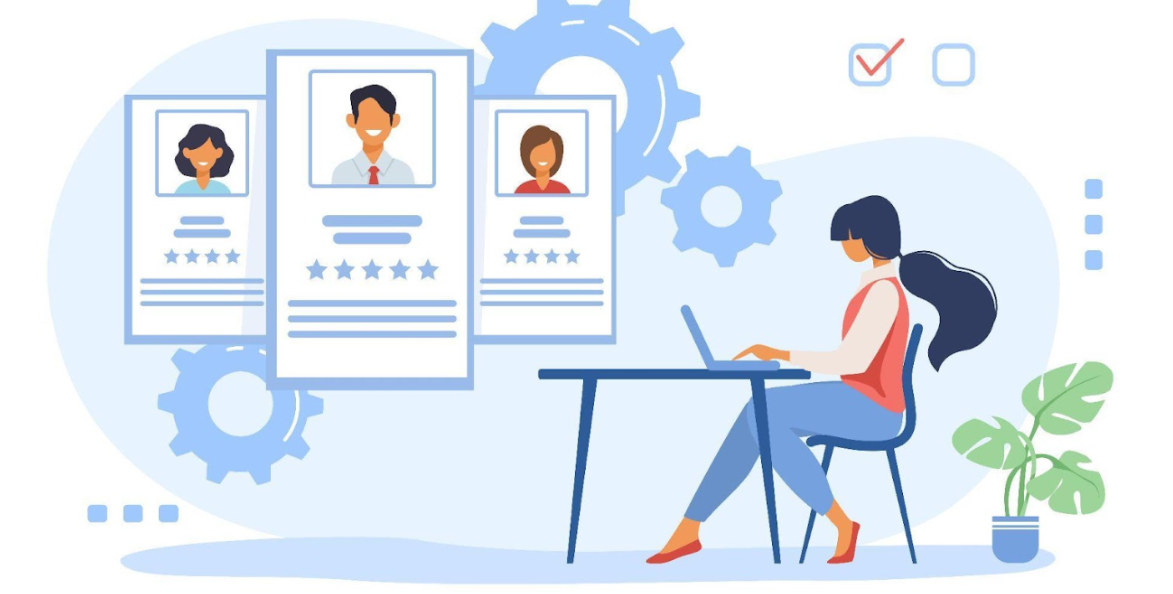
Conquering Change for WGU D356: Wrapping Up the Models That Matter 📄
As you’ve journeyed through the ADKAR Model, Kotter’s 8-Step Change Model, Lewin’s Change Management Model, and Bridges’ Transition Model, one thing becomes clear: mastering change is both an art and a science. Each model brings unique strengths to help you navigate transitions effectively, whether you’re implementing HR technology or addressing organizational shifts.
These models are not just theories—they are practical tools that you’ll need to excel in your studies and beyond. For the WGU D356 OA, understanding the nuances of these frameworks will be essential. From tackling the emotional side of change to managing large-scale transformations, these concepts will guide you in solving real-world challenges.
So, take the time to revisit these topics, dive into the details, and practice applying these models to scenarios. The WGU D356 OA is your opportunity to shine and showcase your grasp of these crucial concepts.
Change is a constant, but with these frameworks in your toolkit, you’re ready to tackle it confidently. Good luck with your WGU D356 OA, and remember: every change is a step toward growth and success!


